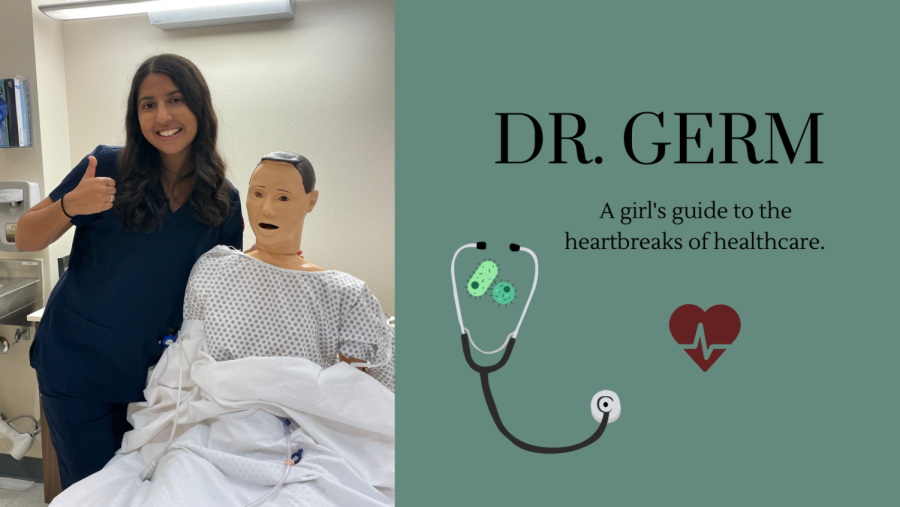In this weekly blog, staff reporter Shannon Christian writes about the myths of healthcare and how it impacts students.
Dr. Germ: operation: room
Monitors rapidly beeping, blood splattered across the floor, and the surgical team moving at the speed of lightning. Most people imagine surgery to be a hectic and even frightening scene, like something out of Grey’s Anatomy. While there may be a level of chaos within emergency surgery, standard operating rooms actually display a calm environment in which trained professionals are able to work swiftly and accurately.
As a clinical practicum student, I’ve been fortunate enough to make rounds on patient floors, emergency departments, post-anesthetic and critical care units, and even women’s floors. The one place I had not seen was the place that interested me the most: the operating room.
Due to the nature of the clinical nurse aide program and the constant rotation of students within hospitals, there are limited units in which we are allowed clearance. The operating room is difficult to observe as consent forms need to be signed in to let a student watch.
Luckily last week, when I was assigned to the post-anesthetic care unit, which sees patients waking up from anesthesia directly after a surgical procedure, I arrived at a mostly empty unit with two physicians conversing. One of the physicians was the head anesthesiologist, and upon asking who I could shadow for the day, he simply led me back to the surgical unit to observe his next scheduled surgery.
I followed the anesthesiologist to pre-op, where the patient signed forms to allow me to watch her procedure, ensuring that I was there for educational purposes and would not be performing any part of the procedure. Once the forms were signed, we headed back to the scrub-in area and prepared ourselves for the sterile environment. I wore a hairnet, washed my hands, and wore gloves and a gown.
The operating room was alarmingly cold, and the surgical team had already laid out the materials that were to be used for the gastric sleeve procedure that I would get to observe. Watching the anesthesiologist’s calculated movements, I was able to watch the patient lose consciousness, and the surgery began. She was incised externally to allow a scope and the Da Vinci robot arms into six small holes in her abdomen. 80% of her stomach was removed to help alleviate cardiac symptoms that had been ailing her.
I found the operating room environment to be fascinating as I watched two large screens that the scope was projected onto, witnessing the surgeon’s movements within the patient’s abdominal cavity. Meanwhile, the surgical team conversed as if they weren’t performing a procedure but rather sat around a table, having normal conversations about cars and vacation. Folk rock played over the speakers as one of the surgical technicians explained the surgeon’s steps to me, identifying structures within the body and even showing me the section of the stomach that was removed.
The entire procedure took exactly one hour, from receiving the patient to waking her up from anesthesia. One hour to detach part of the stomach from the abdominal lining, staple off the section, remove it from the patient’s body, and close the incisions utilized to access the stomach. It was a whirlwind of an experience but quite the antithesis of chaos. The surgical team never faltered as they worked with precision and swiftness. To them, this was just another minor procedure that they had performed countless times.
I’d always been fascinated by the idea of surgery, yet the level of severity that each of my movements would have on a patient has always seemed daunting, deterring me from pursuing it as a career. My experience in the operating room last week has allowed me to reconsider this, though, as there are more roles in surgery than just the lead surgeon. The anesthesiologist constantly monitored the patient’s vitals, the surgical techs helped with instruments and maneuvering the devices used in the procedure, and the OR nurse was able to document and record the findings of the surgery.
With this new experience, my entire perception of the surgical field has changed, as it is not constantly being splattered with blood or doing open-heart fibrillation on a crashing patient. Surgery is a systemic and artful field that is successfully executed by the work of a collaborative and proactive team.
